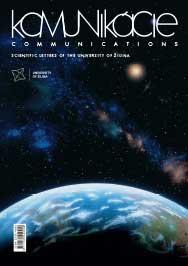The Diesel Fuel Post-Injection into Engine Cylinder as Method of NOx Reduction
The Diesel Fuel Post-Injection into Engine Cylinder as Method of NOx Reduction
Author(s): Zygmunt Szlachta, Jerzy CisekSubject(s): Energy and Environmental Studies, Transport / Logistics
Published by: Žilinská univerzita v Žilině
Keywords: diesel engine; engine cylinder; diesel fuel; NOx reduction;
Summary/Abstract: The possibilities of limiting the emission of nitrogen oxides in the cylinder of the diesel engine by means of its design and operating parameters are limited. This is why studies of the effectiveness of various methods for NOx reduction in exhaust gases are being undertaken. The method used by the authors involves the utilization of a reducing agent in the form of chemically active hydrocarbons (radicals) from the fuel. In order to obtain partially oxidized and thermally decomposed hydrocarbons, the post-injection of fuel (the injection of an additional portion of fuel) into the diesel engine cylinder during the expansion stroke was implemented. To perform this function, a special fuel supply system consisting of two injection pumps was designed. One of the pumps was injecting the main (primary) fuel dose, and the other one – the additional fuel dose. Injection of both fuel doses was accomplished by the same injector. A catalytic converter was used in the exhaust system of the one-cylinder test engine, and all the exhaust gases produced in the combustion of the main diesel fuel dose and chemically activated hydrocarbons coming from the fuel post-injection (additional fuel dose) were passing through the converter. Various NOx reduction efficiency measures were defined to evaluate the results obtained. During the tests, the additional diesel fuel dose and post-injection angle (relative to the TDC), as well as temperature, space velocity of exhaust gases through converter and sort of diesel fuel were changed. It was found that using that method of the reducing agent dosage, the total effect of nitrogen oxide reduction was a combination of the effects obtained in the engine cylinder by Selective Non-Catalytic Reduction (SNR) and the effects obtained in the catalytic converter by Selective Catalytic Reduction (SCR)
Journal: Komunikácie - vedecké listy Žilinskej univerzity v Žiline
- Issue Year: 5/2003
- Issue No: 1
- Page Range: 26-35
- Page Count: 10
- Language: English

